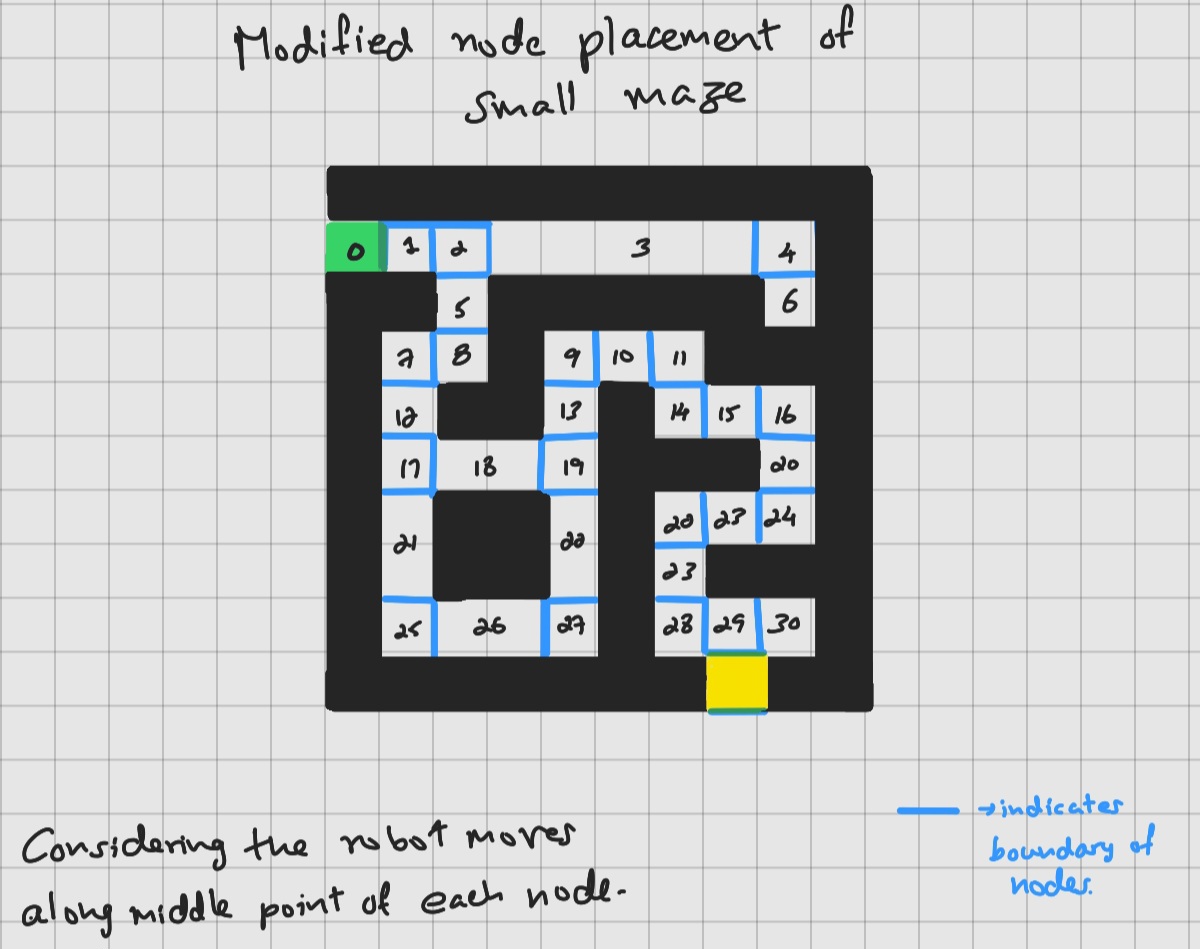Mobile Robot Control 2023 Group 11: Difference between revisions
Jump to navigation
Jump to search
Tag: 2017 source edit |
→Assignment 1: Adding Localization Assignment |
||
| Line 13: | Line 13: | ||
|} | |} | ||
=== Assignment 1 === | ===Assignment 1 === | ||
A* algorithm is more effiient when there are fewer nodes to consider on the map and is faster. In the current map, there are multiple nodes which are adjacent in continuum with each other. This means that the robot can travel long distances without any obstruction. These nodes cane be grouped together to form a single node. | A* algorithm is more effiient when there are fewer nodes to consider on the map and is faster. In the current map, there are multiple nodes which are adjacent in continuum with each other. This means that the robot can travel long distances without any obstruction. These nodes cane be grouped together to form a single node. | ||
| Line 21: | Line 21: | ||
File:Assignment1 solution.jpg | File:Assignment1 solution.jpg | ||
</gallery> | </gallery> | ||
=== Assignment - Localization === | |||
==== Assignment-1 ==== | |||
Revision as of 15:56, 30 May 2023
Group members:
| Name | student ID |
|---|---|
| Anagha Nadig | 1830961 |
| Sarthak Shirke | 1658581 |
| Idan Grady | 1912976 |
Assignment 1
A* algorithm is more effiient when there are fewer nodes to consider on the map and is faster. In the current map, there are multiple nodes which are adjacent in continuum with each other. This means that the robot can travel long distances without any obstruction. These nodes cane be grouped together to form a single node.
The figure below shows the modified node placement of the small maze which can increase the efficiency of the A* algorithm.
